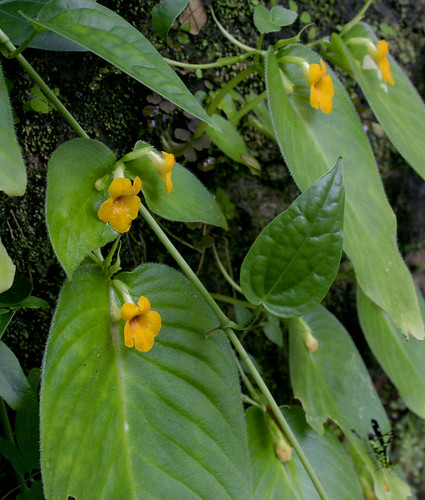
Growing Chirita as House Plants
If you have tried Cape Primroses, also called Streptocarpus, then you may also want to try the cousin Chirita. They have hairy leaves similar to African violets and flowers that are similar Streptocarpus. In fact they all belong to the little know Gesneriad family
- Chiritas can be acquired from the specialist www.dibleys.com They also produce an excellent compact A5 plant catalogue
- Propagation is easy from leaf cuttings in an equal mixture of compost and vermiculite, pearlite or sharp sand.
- Keep plants out of direct sunlight, a north facing windowsill or porch is ideal
- Plants can stay in the same pot for several years if they are give a regular week feed.
- Keep plants a bit on the dry side and treat like African violets
- Chirita Akiro as shown above has marbled leaves
- For small neat pure white Chirita taminiana is recommended by Anne Swithenbank
- For larger flowers try C. Keiko shown below with upto 25 two inch flowers from

Chirita Growing Tips
- Do not drown your Chiritas only water when the compost is dry.
- Deadhead flowers and do not let spent blossoms drop onto the leaves. They may cause rot and disease.
- Chiritas like plenty of light but avoid mid day sun which can burn through a window.
Chirita sinensis is most frequently grown as a house plant. The genus chirita belongs to the gesneriaceae family and contains approx 150 species.
Photo Credits
Chirita micromusa 040919-1032 by Tony Rodd CC BY-NC-SA 2.0
Primulina (Chirita) tamiana, Saintpaulia ‘Cirelda’ and Sinningia ‘Country Tiger’ x self by nipplerings72 CC BY-NC-ND 2.0
Read Chirita a housepalnt with a future
 “>Amazon
“>Amazon
Gesneriaceae: Cyrtandra, Didymocarpus, Streptocarpus, Alloplectus, Achimenes, Chirita, Henckelia, Gasteranthus, Sinningia, Kohleria, in Portuguese, an English version may now be available!

One thought on “Growing Chirita as House Plants”
Comments are closed.